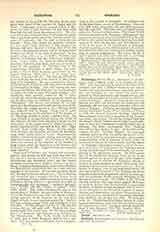

Gebhart, EMILE, a French professor and writer, b. July 19, 1839, at Nancy; d. April 22, 1908, in Paris. He was the grand-nephew of General Drouot, one of the most distinguished soldiers of the First Empire. Having finished his studies in the Lycee of Nancy, he was admitted to the Francaise of Athens, where he imbibed the Hellenic spirit and gathered a rich harvest of facts and anecdotes for his future works. When he returned to France he was sent to the Lycee of Nice and soon after appointed professor of foreign literatures in the University of Nancy. He was so successful that a chair of Southern European literatures was instituted specially for him at the Sorbonne, in 1880. For the twenty-six years during which he retained that position, he was the most popular professor in the Sorbonne, his course of lectures being attended by enthusiastic audiences both of students and of men and women of the world. In 1895 he was elected to the Academy of Moral and Political Sciences, and in 1905 to the French Academy. He was fond of travelling, and every summer, for twenty-five years, he spent three months in Italy, visiting Rome, Milan, Florence, Venice, seeking rare and antique books in libraries, staying in monasteries and talking with the monks, and gathering information concerning popular legends from the common people on the streets and in the cottages of the poor. All the materials so collected were afterwards used in his books. His favorite subjects were Greek antiquity and the Italian Renaissance. He treated them in a masterly manner, showing a thorough but unpretentious knowledge. His style is clear, slightly sarcastic at times, but extremely agreeable. His principal works are: “Praxitele” (1864), “La Renaissance et la Reforme” (1877), “Les Origines de la Renaissance en Italie” (1879), “L’Italie mystique” (1890), “Le son des Cloches, contes et legendes” (1898), “Moines et Papes” (1896), “Autour d’une tiare” (1894), “Cloches de Noel et de Paques” (1900), “Conteurs florentins au moyen-age” (1901), “Jules II” (1904), “Florence” (1906). The last days of his life were dimmed by sadness. As he had always been fond of mysticism, which he had so well described in his lives of St. Francis of Assisi and St. Catherine of Siena, and as he disliked the rationalistic doctrines of the time, the attacks of the Radicals on his religious and patriotic ideals wounded him deeply.
LOUIS N. DELAMARRE

